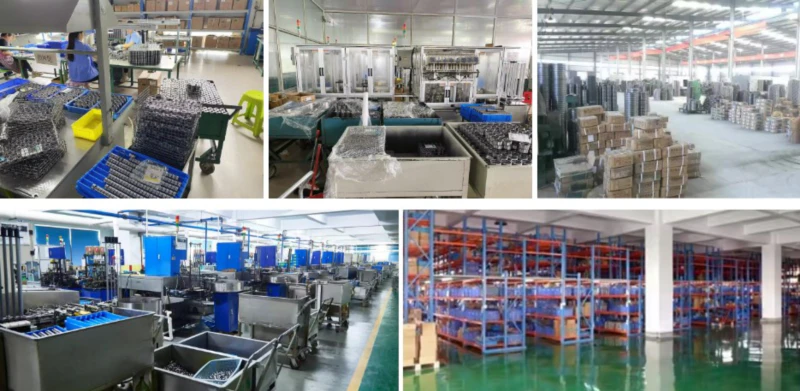Track Bearings Bearing Failure Elimination Procedure
Introduction
In the world of mechanical systems, track bearings play a crucial role in ensuring smooth and efficient movement. However, like any other component, track bearings are susceptible to failures, which can lead to performance issues and costly repairs. In this article, we will explore the various reasons behind track bearing failures and discuss a comprehensive procedure to eliminate them.
Understanding Track Bearing Failures
1. Overloading: The Impact on Track Bearings
2. Insufficient Lubrication: A Recipe for Failure
3. Contamination: The Silent Killer of Track Bearings
4. Misalignment: A Common Culprit
5. Improper Handling and Installation: Setting the Stage for Failure
Overloading: The Impact on Track Bearings
In order to fully comprehend the impact of overloading on track bearings, it is essential to understand the concept of radial and axial loads. Radial loads act perpendicular to the rotational axis, while axial loads act parallel to it.
Overloading occurs when the track bearings are subjected to loads that exceed their design limits. This can result in excessive stress on the bearings, leading to premature wear, overheating, and ultimately, failure.
To prevent overloading of track bearings, it is crucial to accurately calculate the expected loads and select bearings with appropriate load ratings. Additionally, regular inspections and maintenance are necessary to ensure the system remains within the specified load limits.
Insufficient Lubrication: A Recipe for Failure
Lubrication is vital for the proper functioning of track bearings. It reduces friction, minimizes wear, and dissipates heat generated during operation. Insufficient or improper lubrication can quickly lead to bearing failure.
Common causes of insufficient lubrication include:
– Inadequate lubricant quantity
– Using the wrong type of lubricant
– Contaminated lubricant
Regular lubrication checks, adherence to manufacturer recommendations, and timely re-lubrication are essential to ensure optimal performance and prevent bearing failures due to insufficient lubrication.
Contamination: The Silent Killer of Track Bearings
Contamination refers to the presence of foreign particles, such as dust, dirt, or water, in the track bearing system. These particles can infiltrate the bearing’s internal components, leading to increased friction, wear, and corrosion.
Preventive measures to counter contamination include:
– Effective sealing and shielding mechanisms
– Regular maintenance to remove contaminants
– Implementing proper cleaning and storage procedures
By minimizing contamination, the lifespan of track bearings can be significantly extended, reducing the likelihood of premature failures.
Misalignment: A Common Culprit
Misalignment occurs when the track bearings are not properly aligned with the mating components. This can happen due to various reasons, such as improper installation, structural changes, or shaft deflection.
Common symptoms of misalignment include:
– Increased noise and vibration
– Uneven wear patterns
– Reduced bearing lifespan
To mitigate misalignment-related failures, it is crucial to ensure proper alignment during installation and regular monitoring of alignment conditions. Additionally, utilizing self-aligning track bearings can help compensate for minor misalignments.
Improper Handling and Installation: Setting the Stage for Failure
The handling and installation of track bearings require careful attention to detail. Mishandling or incorrect installation practices can introduce internal damage, misalignment, or other issues that can lead to premature failures.
Best practices for handling and installation:
– Properly storing bearings to prevent contamination
– Using appropriate tools and techniques during installation
– Following manufacturer guidelines
By adhering to proper handling and installation procedures, the risk of track bearing failures due to mishandling or incorrect installation can be minimized.
Conclusion
In conclusion, track bearing failures can have detrimental effects on mechanical systems, leading to performance issues, increased downtime, and costly repairs. By addressing the root causes of failures, such as overloading, insufficient lubrication, contamination, misalignment, and improper handling/installation, it is possible to eliminate these issues and ensure the longevity and optimal performance of track bearings.
At [Your Company Name], we understand the importance of high-quality track bearings and their impact on mechanical systems. As a leading player in the Chinese reducer market, we offer a wide range of products, including servo reducers, plastic gearboxes, gear motors, worm gearboxes, worm wheels, and worm reducers. With state-of-the-art automated production and assembly equipment, we are dedicated to delivering superior products, competitive pricing, and excellent customer service. Contact us today to learn more about our customizable solutions.
Author: Czh

